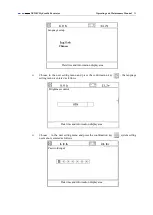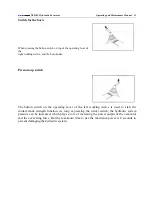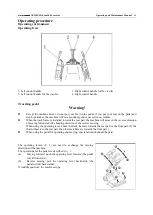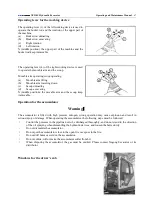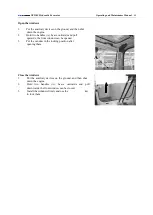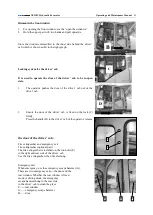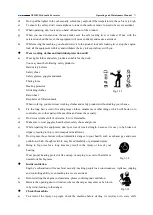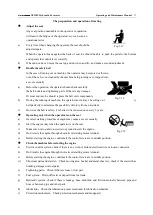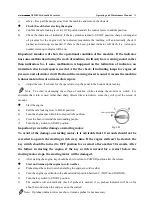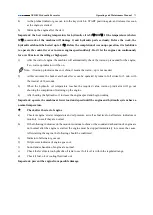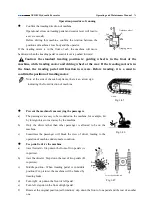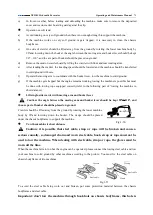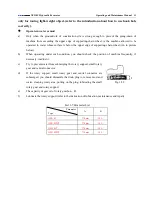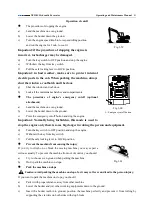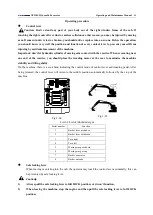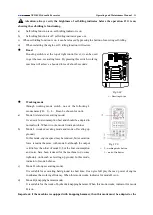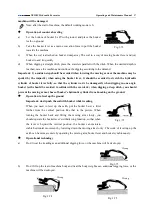
XE210C Hydraulic Excavator
Operating and Maintenance Manual
73
The preparation and operation of starting
Adjust the seat
Any seat position unsuitable to the operator or operation
will lead to the fatigue of the operator very soon even an
operational error.
a)
Every time when changing the operator, the seat should be
adjusted again.
When the operator leans against the back of seat, he should be able to push the pedal to the bottom
and operate the control lever correctly.
b)
If he can not, he can move the seat up and down, to and fro, and make a second adjustment.
Buckle the safety belt
In the case of turning over a machine, the operator may be injured or thrown
out of the cab, even crushed by the machine being turning over, trapped into
a severe casualty.
a)
Before the operation, the operator should check carefully
the belt, buckle and tightening parts. If there is any damage
Or wear and tear, he should replace the belt or its components.
b)
During the running of machine, the operator must always be sitting on the seat and buckle the safety
belt perfectly to minimize the possibility of injury from an accident.
c)
However the belt is safety, it is better to be renewed once every 3 years.
Operating only when the operator is on the seat
a)
Incorrect starting procedure of engine may cause a severe casualty.
b)
Start the engine only when the operator is on the seat.
c)
Make sure not to stand on crawler or ground to start the engine.
d)
Don’t starts the engine through short-circuit starting motor terminal.
e)
Before starting the engine, confirm all the control levers are in middle position.
Check the machine before starting the engine
a)
Electric control system: check if there is any worn or broken electrical wire or loosen connector.
b)
Don’t starts the engine through short-circuit starting motor terminal.
c)
Before starting the engine, confirm all the control levers are in middle position.
d )
Structural parts and crawler
:
Check moving arm, bucket and metal sheet etc; check if the crawler has
bending, damaged or lost parts.
e)
Tightening parts
:
Check if there is loose or lost part.
f)
Fuel system
:
Drain off water or deposit from fuel tank.
g)
Hydraulic system: check if there is leakage, hose distortion and friction mutually between pipe and
hose or between pipe and other parts.
h)
lubrication
:
Check the lubrication points mentioned in lubrication schedule.
i)
Protection mechanism
:
Check protection mechanism and mudguard.
Fig.1-39
Fig.1-38
Fig.1-37

